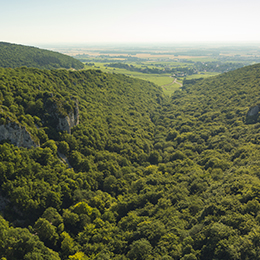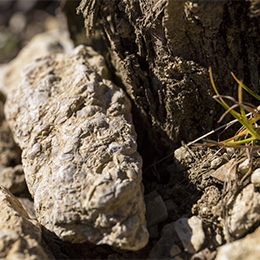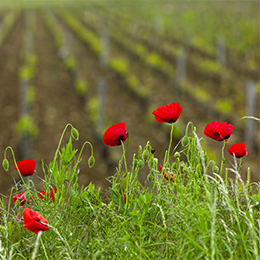The names of the Climats sometimes refer to unique natural characteristics. When you taste a Montagny Premier Cru, Les Combes, a Nuits-Saint-Georges Premier Cru, Aux Cras or a Meursault Premier Cru, Genevrières, the name will lead you to the vineyard and its environment.
Some of the Climats of the Bourgogne region take their names from the peculiarities of the landscape. Every place tells its story in your glass, relating:
• A particular relief
• A unique aspect
• A precise elevation
• Characteristic vegetation
• Unique natural geology
To discover this natural diversity, why not take a trip along the Grande Routes des Vins wine trails?

In the Bourgogne region, the incline, aspect and elevation of every Climat are different.
For example, the word “combe” is Gallic in origin and means “hollow” or “valley”. The valleys that one finds now on the Côte were hollowed out by glacial meltwater during the last Ice Age, over 20,000 years ago.
In the summertime, these melt waters flowed as waterfalls, and carved out steep sided valleys in the limestone and wider ones in softer rock. These waters swept along blocks of stone and pebbles, which accumulated, explaining the significant amount of stony material present in the vineyards.
Wine names that include a reference to a valley include Puligny-Montrachet Premier Cru, Les Combettes and Mercurey Premier Cru, Les Combins.

The soil and sub-soil are the very foundations of the Bourgogne region.
The term “Perrière” has many meanings. Most frequently, it indicates a quarry – a place where stones and rock were extracted. A great deal were dug and went on to become vineyards. The word is also used to describe plots that are or were close to stony paths.
One such name is Meursault Premier Cru, Les Perrières.
On certain Climats called “Les Crais” or “Les Chailles,” there is also a lot of stone, but here it is in its raw state, scattered on the land rather than being quarried.
For example, Ladoix Premier Cru, Les Chaillots.

The Bourgogne region is home to some rich and varied vegetation.
For example, juniper can be found growing in scrubland or windswept areas. This scented evergreen with spiny needles and bluish-violet berries thrives on Bourgogne limestone.
Its name is referenced in many different names including Les Genavrières in Morey-Saint-Denis, and Aux Genaivrières in Vosne-Romanée. In Meursault, the Climat known as Genevrières includes several lieux-dits, such as Les Genevrières Dessus and Les Genevrières Dessous.